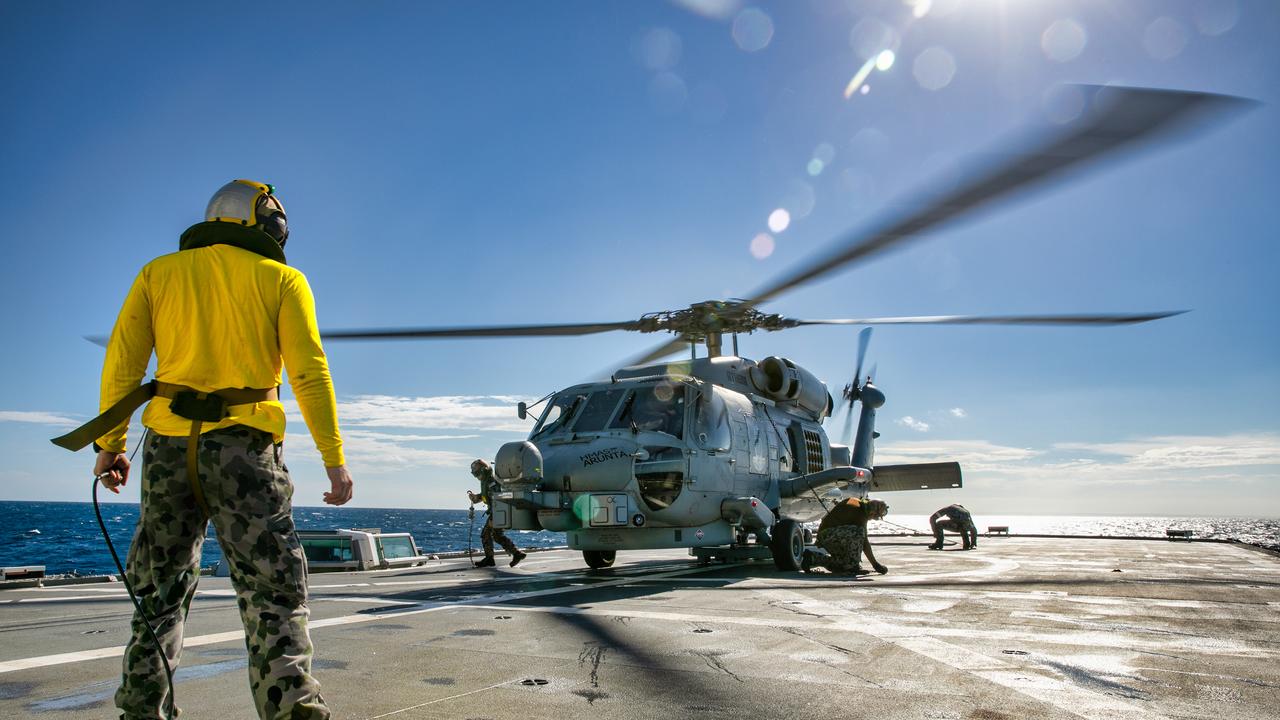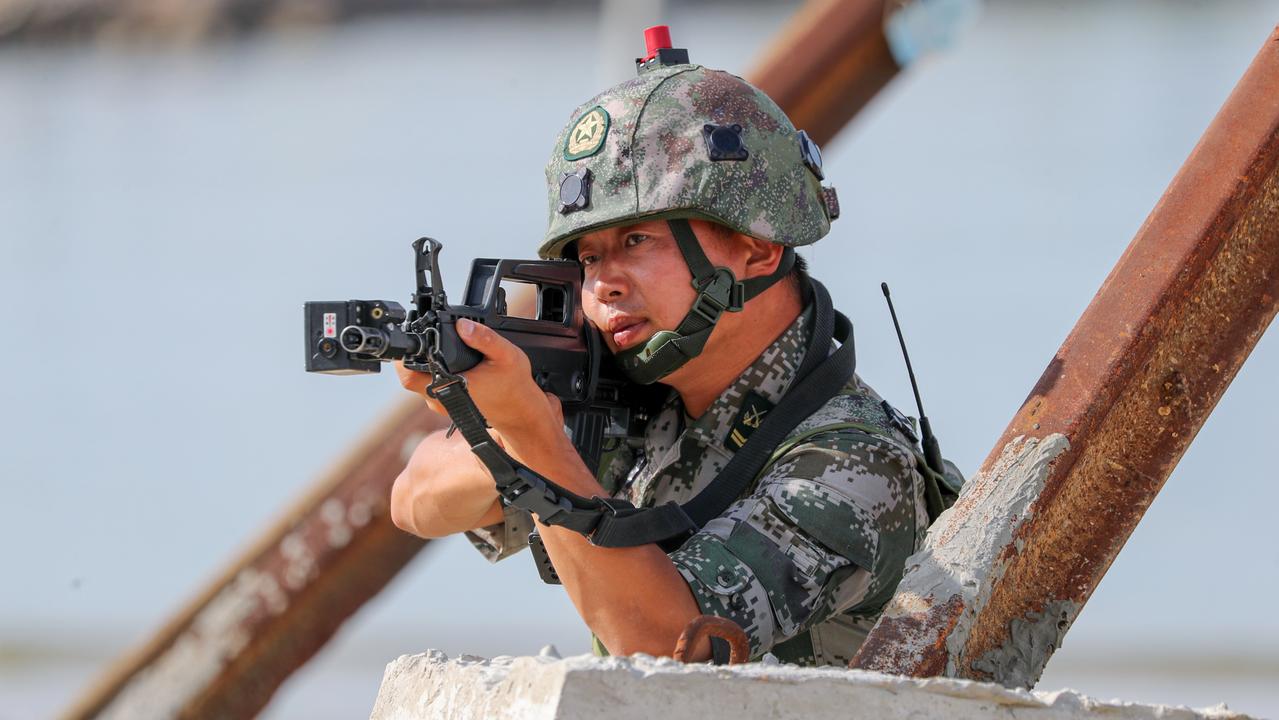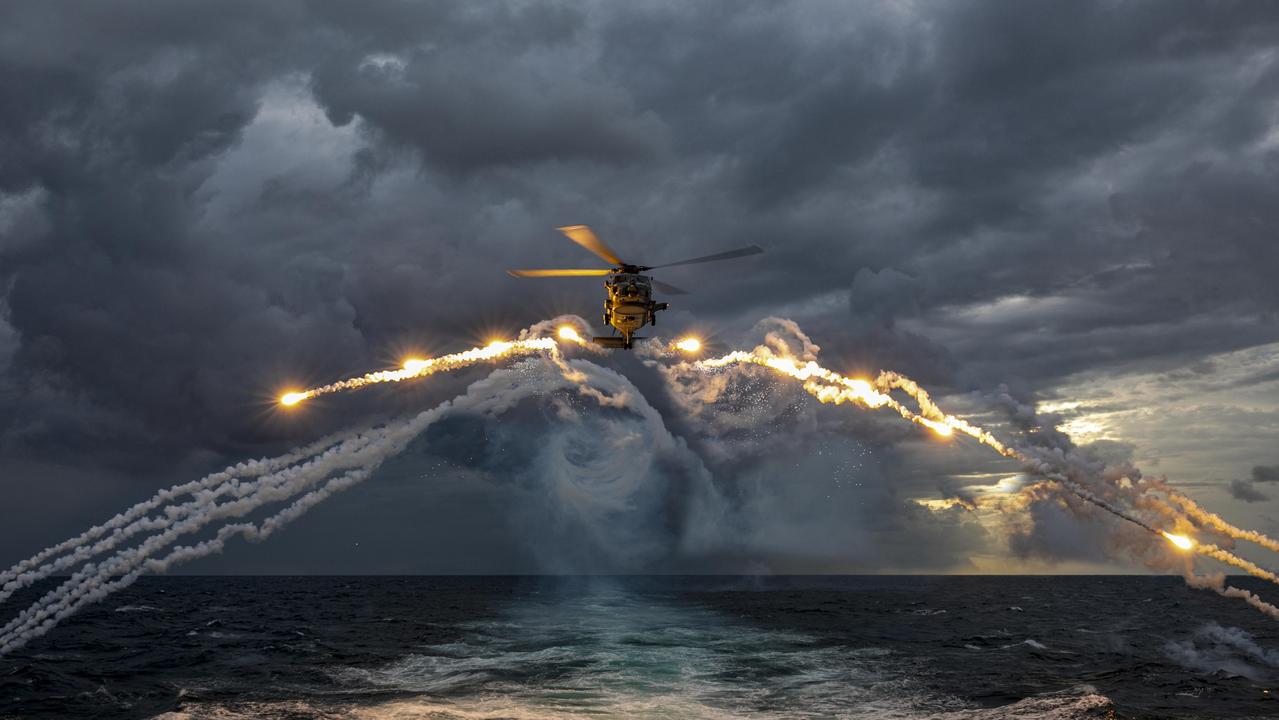Australia’s $1.5 billion deal for new submarine-hunting helicopters comes with a catch
Australia’s still struggling to buy submarines. But it’s getting 12 new hi-tech sub-hunters, in a $1.5 billion deal that comes with a big catch.
Australia’s still struggling to buy submarines. But it’s getting 12 new sub-hunters. Sort of.
The US State Department has signed off on a $1.48 billion deal to sell an additional batch of Lockheed Martin MH-60R Seahawk combat helicopters to the Royal Australian Navy.
But there’s a catch.
They’ll be “equipped for, but not with” its primary weapon system.
These large and capable versions of the famous Black Hawk helicopters are built to hunt hostile submarines. They do this by deploying up to 25 disposable sonobuoys. But their best means of narrowing down a target is a “dipping sonar” — a sensor package at the end of a winch line lowered deep into the water.
The 12 new helicopters will come as a fixed-price package deal. Bundled with them will be spare engines, electronic warfare and communications systems.
But they will only have “aircraft provisions” for the Low-Frequency Sonars (ALFS) that generally come as standard.
The reason is closely tied to Australia’s ongoing record of defence procurement failures, and a rapid shift in our strategic circumstances.
Vice Admiral Mike Noonan, who retired in July, told the Australian National University’s Professor Rory Medcalf this week that anti-submarine warfare was an increasingly critical mission.

“We shouldn’t discount the fact that in the last 12 months we’ve seen China commission nine new destroyers, two amphibious ships, and a nuclear-powered submarine. And so that puts it into a context that we can’t sit idly by and expect that we will be able to remain a credible defence power and presence in the region if we don’t explore the best possible technologies and platforms,” Vice Admiral Noonan said.
That’s where the new MH-60R Seahawks come in.
They’re being bought to replace the failed MRH-90 Taipan naval utility helicopter project.
These were designed to be flexible, multi-mission helicopters capable of operating off Australia’s amphibious landing ships in combat and transport roles.
But, 18 years and $3.7 billion later, they’ve largely failed to deliver.
“While on paper the MRH-90 has more capacity than the Black Hawk, in real life that’s irrelevant if the helicopter isn’t flying,” Australian Strategic Policy Institute (ASPI) analyst Marcus Hellyer stated upon news of the Taipan’s cancellation in December.
The new Seahawks will bring commonality and compatibility with the remainder of the RAN’s anti-submarine helicopter fleet. And the Australian Army is seeking to buy 40 similar Black Hawks to replace its Taipans.

Australia under siege
Australia’s greatest threat is blockade by sea.
And submarines are the primary weapons of blockade: both to enforce — and defeat — one.
“Remember that Australia is a continent. We’re an island. We’re a maritime nation. We rely on maritime trade for our economic prosperity. And ultimately, the way that we are connected to the world by the sea bed and submarine cables is absolutely vital to our global trading system,” Vice Admiral Noonan said.
“And so if our access to the maritime environment was disrupted in any way, be that in terms of blockade of the sea routes that we use for trade or disruption to the communication lines that we rely upon, we would see a very significant and rapid deterioration of the security situation and our prosperity.”
Thus the need for nuclear-powered submarines.
“The only way to chase a nuclear-powered submarine is with a nuclear-powered submarine,” Vice Admiral Noonan adds.

Conventional diesel-electric submarines such as Australia’s Collins class have less powerful engines. And they must surface once or twice daily to run the diesel engines that recharge their batteries.
But there are other options.
“The existing fleet surface fleet is more capable than it’s ever been in terms of ASW attributes,” he adds. “So while the submarine is a centrepiece of the undersea warfare domain, it’s not the only piece”.
Australia’s next-generation frigate, the Hunter Class, is based on the UK navy’s Type 26 anti-submarine hull. While Australia is attempting to tailor these nine ships into a general purpose vessel, much of their anti-submarine capability will be retained.
And they will need anti-submarine helicopters, such as the Seahawk.
“I fully expect that we’ll see new technologies exploited and explored in the next decade that, that we’re not even using now,” he added in an oblique reference to new autonomous submarine projects.

Sub-optimal situation
A year after the surprise dumping of the French Attack-class project, Australia’s hunt for a replacement submarine appears no closer to fruition.
The new AUKUS technology sharing agreement hasn’t yet been able to offer up a solution.
A 300-strong task force was given 18 months in September last year to find out how Australia could get nuclear-powered submarines as quickly as possible.
Since then, they’ve discovered that the United States Virginia-class attack submarine production lines are already at maximum capacity building its own new boats and undertaking necessary repairs to its hard-used fleet. And a substandard steel scandal may threaten to force the early retirement of some boats.
The United Kingdom’s Astute-class attack submarine production run has just ended. And these boats must be modified to give Australia the US-based combat systems it demands.
“There has certainly been a realisation that it may not be straightforward,” Vice Admiral Noonan concedes.
“Certainly, from my perspective, I think there are great advantages in the Astute. I think there are great advantages in Virginia. But, ultimately, the decision of what that platform will be must be whichever best meets Australia’s needs.”
Neither platform is perfect, he adds. “Clearly, the DNA of the submarine will be predominantly one of those designs.”
Until then, Australia’s existing Collins-class submarines face increasing challenges.
New technology means they’re getting easier to find. But nuclear-powered submarines remain difficult to locate and intercept.






